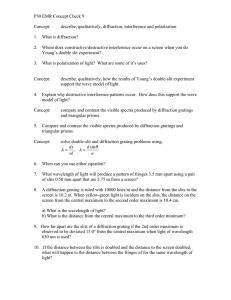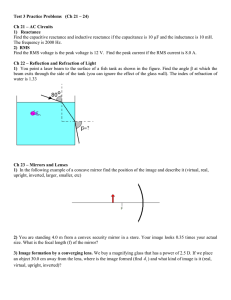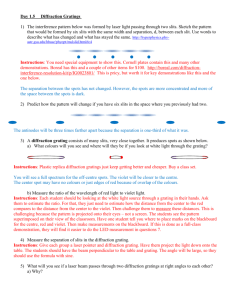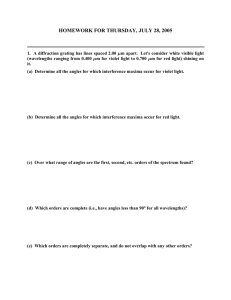Day 10 - Diffraction Gratings Note
advertisement
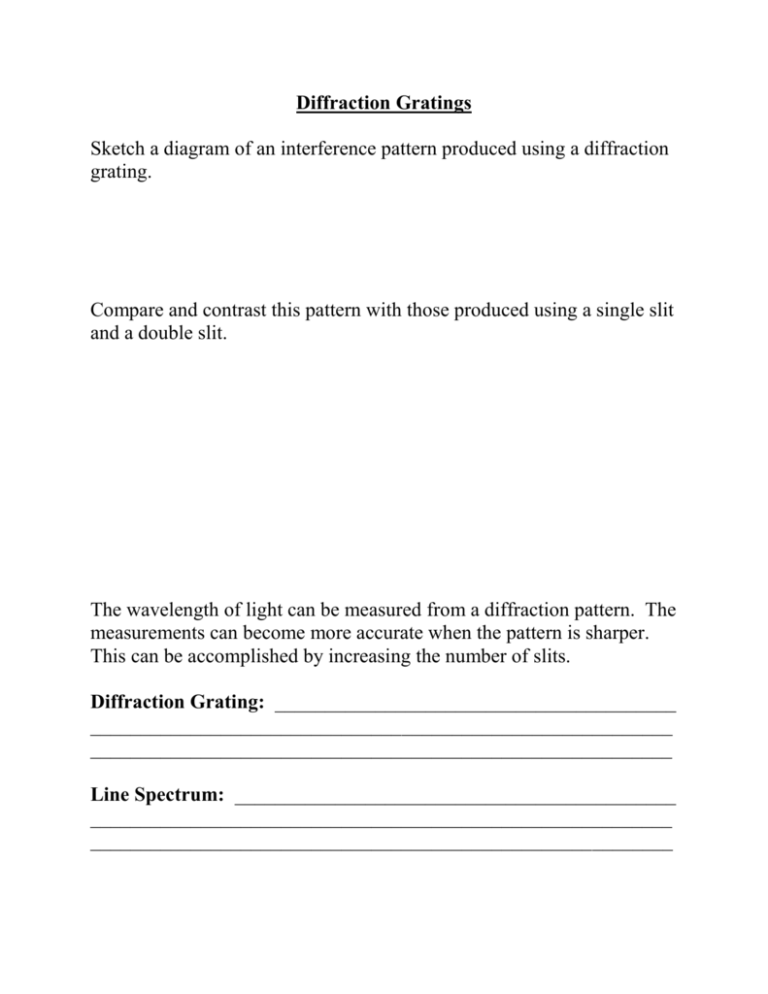
Diffraction Gratings Sketch a diagram of an interference pattern produced using a diffraction grating. Compare and contrast this pattern with those produced using a single slit and a double slit. The wavelength of light can be measured from a diffraction pattern. The measurements can become more accurate when the pattern is sharper. This can be accomplished by increasing the number of slits. Diffraction Grating: ________________________________________ __________________________________________________________ __________________________________________________________ Line Spectrum: ____________________________________________ __________________________________________________________ __________________________________________________________ Continuous Spectrum: ______________________________________ __________________________________________________________ __________________________________________________________ Equation: What are the equations for double slit interference? How can these be adapted for diffraction gratings? 1. What are the angular positions of the first-order maxima for violet light (450 nm) and red light (650 nm) when using a diffraction grating with 5400 slits over 2.8 cm? 2. Which maximum occurs closes to the central axis if the diffraction grating used has 12 678 lines in 2.40 cm: the second order red (730 nm) maximum, the third order violet (400 nm) maximum, or the second order green (510 nm) maximum?

